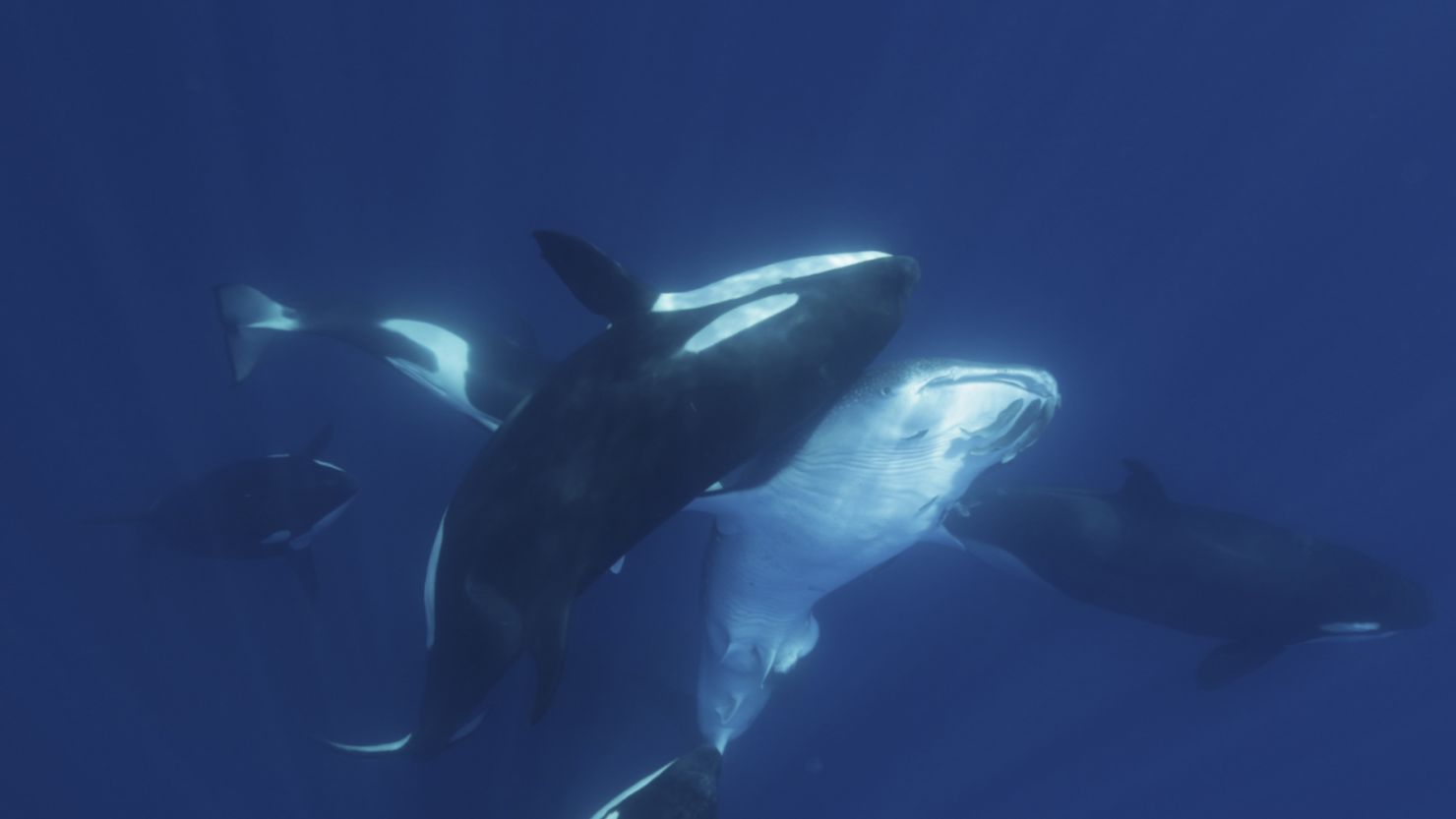Sign up for CNN’s Wonder Theory science newsletter. Explore the universe with news on fascinating discoveries, scientific advancements and more.
An orca pod in the Pacific Ocean off the coast of Mexico has devised a cunning strategy to hunt and kill whale sharks — the world’s largest fish that can grow up to 18 meters (60 feet) in length — new research has revealed.
While anecdotal evidence had previously suggested that orcas can take down whale sharks, marine scientists have now documented the behavior in detail for the first time, analyzing four separate hunting events caught on camera.
The orcas hunt whale sharks that gather at feeding sites in the Gulf of California and are not fully grown. The young sharks are typically 3 to 7 meters (10 to 23 feet) in length, making them more vulnerable to predators. While an orca versus whale shark matchup may seem like an epic battle, the orcas make easy work of the gentle giants.
“The whale shark has the smallest brain compared to body mass. The brain is the size of an egg,” said Francesca Pancaldi, first author of the study and a researcher at Centro Interdisciplinario de Ciencias Marinas in Mexico.
“It’s a big, big fish that is very slow compared with other sharks. It has tiny, tiny teeth that it doesn’t use as a defense mechanism,” Pancaldi added. “The only defense it has is flailing or diving down. It can dive to 2,000 meters or more.”

The hunts described in the study, published Friday in the journal “Frontiers in Marine Science,” occurred between 2018 and 2024 and were captured in images and videos taken by scientists and members of the public.
The authors were able to identify the orcas involved by looking at distinctive features such as dorsal fins or scars on the animals’ bodies. In three of four hunting events, a male orca — nicknamed Moctezuma after the Aztec emperor — that is around 8 meters (26 feet) long was present.
A female orca previously observed in the presence of Moctezuma participated in one event also, suggesting they could be related or members of the same pod, said senior study author Erick Higuera Rivas, a marine biologist at Conexiones Terramar, a nonprofit organization.

Orca vs. whale shark
The researchers’ analysis revealed exactly how the killer whales, often hunting as a group, subdue the whale shark.
First, the orcas use their bodies to hit a whale shark at high speed. Then, they flip the whale shark so it’s floating belly up and unable to dive down to escape. The orcas then bite the abdomen of their prey, allowing its blood to flow out before consuming its internal organs.
“You can clearly see how all the members of the orca pod are trying to bring down the whale shark,” Higuera Rivas said.
“While one orca was bumping him on the ventral (belly) side, the other one was bumping him on the head. Then eventually the whale shark is taken into an upside-down position,” he added.
This maneuver puts the whale shark in a state seen in other animals called “tonic immobility” — essentially temporary paralysis resulting from extreme fear.
The study authors believe the orcas are plundering the whale shark’s large and nutrient-rich liver, which makes up a significant amount of the shark’s body weight, but the researchers didn’t observe the orcas consuming the organ.
“As apex predators, killer whales have been known to hunt sharks for their fatty livers,” said Sarah Teman, a doctoral student in the University of Washington’s School of Aquatic and Fishery Sciences.
“However, what makes this discovery exciting is that it’s the first time we’ve seen this behavior clearly documented with whale sharks, which are the largest sharks on the planet,” Teman, who was not involved in the study, added in an email. “It’s a pretty amazing find!”
Found worldwide, orcas are the ocean’s apex predators. They prey on a wide variety of creatures: fish, marine mammals like seals and dolphins, sea turtles, and cephalopods such as squid.
While there is just one species of orca there are multiple ecotypes, or groups that share similarities in their appearance and behavior.

It’s possible the Gulf of California orcas may form a new ecotype that specifically targets elasmobranchs — sharks and rays — Pancaldi and Higuera Rivas said, although more research is needed to prove the case. Moctezuma, who was first spotted in 1992, has been seen hunting other elasmobranch species such as the Munk’s pygmy devil ray, which is 1 meter (3.2 feet) wide, bull sharks and stingrays.
“More research is needed to understand where this specialized pod fits into our knowledge of ecotypes,” Teman said.
In South Africa, orcas have developed techniques to kill great white sharks, one of the ocean’s most fearsome predators. The behavior has driven the sharks away from some parts of the coast around Cape Town in what some experts think is a worrying ecological shift.
However, Pancaldi said that the orcas’ appetite for whale sharks had not resulted in any significant consequences for the population of whale sharks that gather in the Gulf of California or the wider ecosystem.




